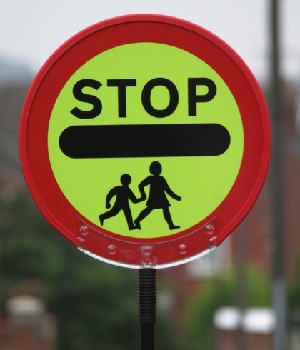 Schools in built up areas are identified easily by the safety railings immediately outside the school gates. It's fairly common knowledge that these are placed there to ensure that when children leave the safety of the school perimeter fence they do not walk straight out into oncoming traffic.
Schools in built up areas are identified easily by the safety railings immediately outside the school gates. It's fairly common knowledge that these are placed there to ensure that when children leave the safety of the school perimeter fence they do not walk straight out into oncoming traffic.
There are some similarities to be drawn in the ways that schools ensure children's online safety while in the school environment. Schools maintain a zone of internet safety by denying children access to blocked sites, eg. Facebook, adult content and by applying filters that actively find and block content that features certain keywords.
Simply having a perimeter fence around the school and safety railings are not effective tools in themselves for educating children about road safety, they are merely preventative measures. These measures on their own are not enough, it is highly important that children learn about the risks and hazards so that when they are outside the zone of safety provided by these physical guards, they can use roads safely.
The potential distraction is that as we put more barriers and safeguards in place around the provision of internet in schools, we overlook the unfettered access that our children have to content outside this environment. We perhaps fall into the trap of believing that our children access the internet in a zone of safety, but this is an illusion. A balance needs to be struck between putting physical limits in place and educating the children so that when those limits are not in place they don't go on an unfiltered binge.
Parents can easily forget that the smartphones children carry around in their pockets have unfiltered access to the internet 24-7. Trying to put any effective limits or filters in place on the child's own smartphone can present a real challenge. There is also the potential danger that a parent will believe that the measures and safeguards in place are 100 per cent effective, resulting in a misplaced trust in the technology.
Children are unlikely to understand why the safety railings are in place outside the school gates without any explanation. In as much as the safety railings don't actually teach children about the hazards of crossing busy roads, internet filters and blocks do not alone teach them how to browse safely on the internet.
I would advocate that we should instead listen to our children's own perceptions and concepts of e-safety and after listening seek to shape their impressions in the direction of clearer understanding of safety and where the risks lie. When we tell our children not to use a particular site, app or social networking tool – how do we know that they will abide? Some parents insist on being accepted by their own children as friends on Facebook on the expectation that their child would never post anything that they would not approve of.
As our children rush to share their real world lives online through the growing plethora of social media apps, it is important that teachers and parents don't place too much value on purely physical barriers to protect the safety of our children online.
We may not remember how our parents first carried us across the road, then held our hand and later as our parents' trust deepened they allowed us to cross on our own. It is far wiser to place greater emphasis on educating our children about e-safety, than legislating for it.

